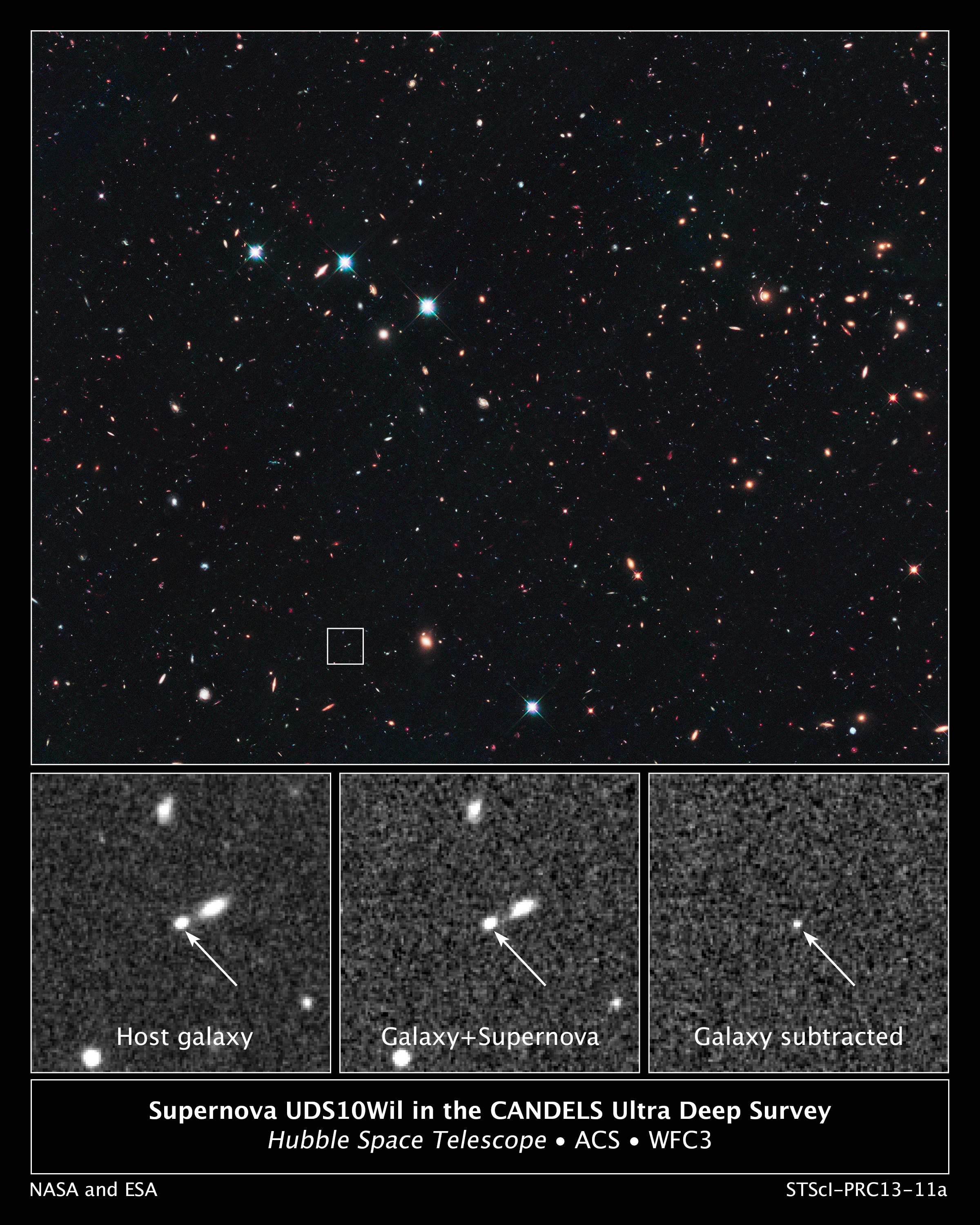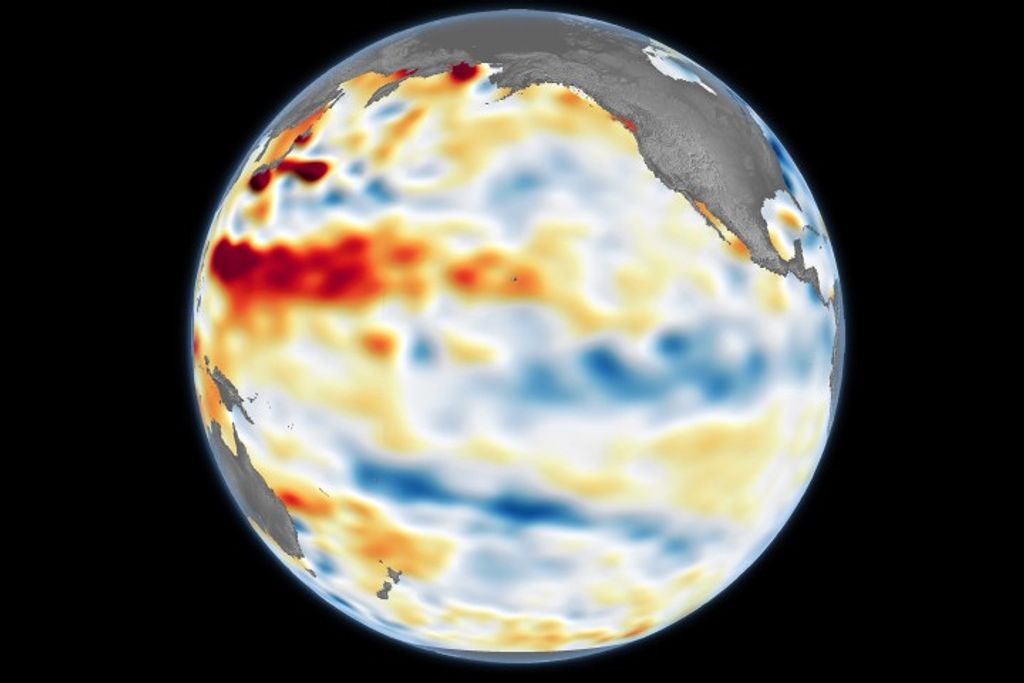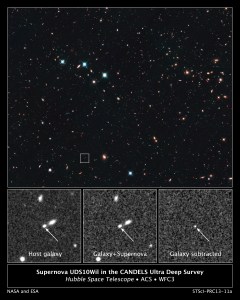
Supernova UDS10Wil in Hubble’s CANDELS Ultra Deep Survey
This NASA Hubble Space Telescope view looking long ago and far away at a supernova that exploded over 10 billion years ago. The supernova's light is just arriving at Earth because it has traveled more than 10 billion light-years (redshift 1.914) across space. The supernova, designated SN UDS10Wil, is nicknamed SN Wilson, after the 28th U.S. President, Woodrow Wilson. At the time it exploded, the universe was in its early formative years where stars were being born at a rapid rate. Astronomers spotted SN Wilson in December 2010 in the Cosmic Assembly Near-infrared Deep Extragalactic Legacy Survey (CANDELS) field. The small box in the top image pinpoints SN Wilson's host galaxy in the CANDELS survey. The image is a blend of visible and near-infrared light, taken by Hubble's Advanced Camera for Surveys and Wide Field Camera 3 (WFC3). The astronomers' search technique involved taking multiple near-infrared images with WFC3 spaced roughly 50 days apart over the span of three years, looking for a supernova's faint glow. The three bottom images, taken in near-infrared light with WFC3, demonstrate how the astronomers found the supernova. The image at far left shows the host galaxy without SN Wilson. The middle image, taken a year earlier, reveals the galaxy with SN Wilson. The supernova cannot be seen because it is too close to the center of its host galaxy. To detect the supernova, astronomers subtracted the left image from the middle image to see the light from SN Wilson, shown in the image at far right. The astronomers then used WFC3's spectrometer and the European Southern Observatory's Very Large Telescope to verify SN Wilson's distance and to decode its light, finding the unique signature of a Type Ia supernova.
- X



























